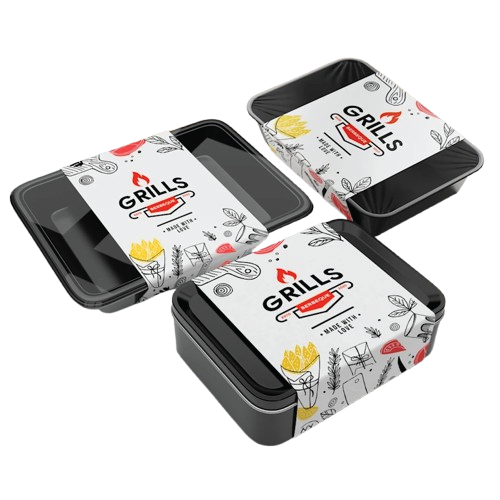As the world becomes increasingly aware of environmental issues, the question of how to dispose of packaging materials responsibly is more pressing than ever. One common type of packaging that often raises questions is Cardboard Sleeves For Food Packaging, which are frequently used for food items. In this article, we will explore whether they can be recycle, the factors that influence their recyclability, and best practices for ensuring proper disposal.
Understanding Cardboard Sleeves
First, let’s define what we mean by cardboard sleeves for food packaging. These are typically made from paperboard or corrugated cardboard and are use to wrap or contain food products. You may find them around items like takeout containers, pizza boxes, or even certain snack foods. Their primary purpose is to provide support and protection while also serving as a means for branding and information.
The Benefits of Using Them
they have several advantages. They are lightweight, which can help reduce transportation costs and carbon emissions. Additionally, they are often made from renewable resources, making them a more sustainable option compare to plastic packaging.
Can Cardboard Sleeves Be Recycle?
In general, most cardboard is recyclable. However, the recyclability of cardboard sleeves for food packaging specifically depends on several factors. To understand this better, we must consider the materials used in their production, any coatings or additives, and local recycling regulations.
- Material Composition
First, let’s examine the material composition of cardboard sleeves. Many sleeves are made from recyclable paperboard or corrugated cardboard. In this case, they can usually be recycle as long as they are clean and free from contaminants. However, some sleeves may have additional materials such as plastic coatings or laminates, which can complicate the recycling process.
- Coatings and Additives
Next, consider the coatings that may be apply to cardboard sleeves. Some sleeves are treate with plastic or wax to enhance moisture resistance or to improve their appearance. Unfortunately, these coatings can make recycling more difficult. While some recycling facilities have the capability to process these types of materials, not all do. Thus, it is essential to check with local recycling programs to see what they accept.
- Local Recycling Regulations
The recyclability of cardboard sleeves for food packaging also depends on local regulations. Different municipalities have varying rules regarding what can and cannot be recycle. Some areas may accept cardboard sleeves in their recycling bins, while others may require them to be dispose of as trash. Therefore, it is always a good idea to check with your local waste management authority for specific guidelines.
Preparing Cardboard Sleeves for Recycling
If you determine that your cardboard sleeves can be recycle, it is crucial to prepare them properly. Transitioning into the next phase of our discussion, let’s explore the steps you can take to ensure that your sleeves are ready for recycling.
- Remove Contaminants
Before placing cardboard sleeves in the recycling bin, make sure to remove any food residue or other contaminants. Food waste can spoil the recycling process, as it may attract pests or lead to contamination. Therefore, gently wiping or rinsing the sleeves can help ensure they are clean.
- Flatten the Sleeves
Additionally, flattening the sleeves can save space in your recycling bin and make it easier for recycling facilities to process them. Flattening also allows for more efficient transportation of materials to recycling centers.
- Check Local Guidelines
As previously mentioned, it is important to check your local recycling guidelines. Some areas may require specific handling procedures for cardboard, while others may have different collection schedules. Understanding these details can help you ensure that your recycling efforts are effective.
Alternative Options for Cardboard Sleeves
While recycling is an important option, it is not the only way to manage cardboard sleeves. If recycling is not feasible in your area, consider alternative options.
- Reuse
One straightforward option is to reuse cardboard sleeves whenever possible. They can serve various purposes around the home. For instance, you might use them to organize items, protect fragile objects, or even as craft materials for children.
- Composting
In some cases, if the cardboard sleeves are made from untreated paper, they may be compostable. However, this largely depends on the absence of coatings or inks that are not compost-friendly. If you are considering composting, be sure to confirm that the materials are suitable for this method.
- Upcycling
Another creative option is to upcycle cardboard sleeves into new products. With a little imagination, you can transform them into storage boxes, decorative items, or even gardening planters. This can not only reduce waste but also spark creativity.
The Bigger Picture: Why Recycling Matters
Transitioning to the broader context, let’s consider why recycling cardboard sleeves for food packaging and other materials is crucial. Recycling helps conserve natural resources, reduces landfill waste, and lowers greenhouse gas emissions. Moreover, it supports a circular economy, where materials are reused and repurposed rather than discarde.
Conclusion
In conclusion, cardboard sleeves for food packaging used for food packaging can often be recycle, but their recyclability depends on various factors such as material composition, coatings, and local regulations. To ensure effective recycling, it is essential to remove contaminants, flatten the sleeves, and adhere to local guidelines. Advanced Packaging Printing techniques enable companies to achieve high-quality graphics and vibrant colors that enhance product appeal.


